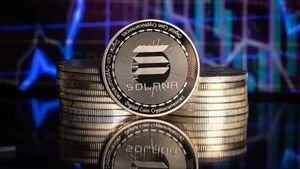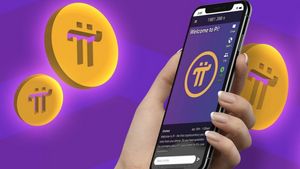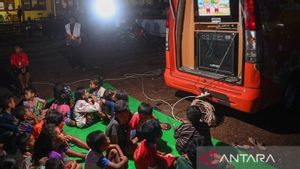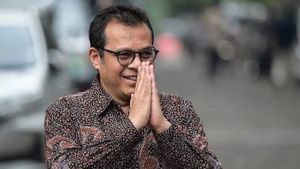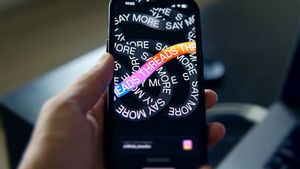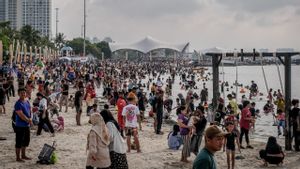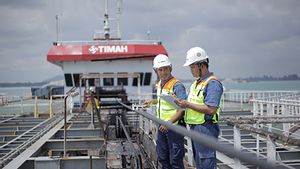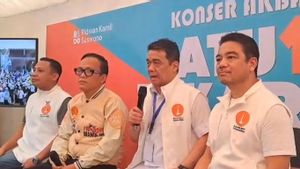JAKARTA - When astronauts are in space, they not only think about missions to be completed but also how to survive by not always being supplied from land, aka Earth.
The American Aeronautics and Space Administration (NASA) found a solution, by recycling consumables such as food, air, water and including the urine of astronauts who are currently being tested on the International Space Station (ISS).
Launching the official NASA website, Monday, June 26, the test was dubbed a life-supporting system that ideally needed to restore nearly 98 percent of the water astronauts brought at the start of a long journey.
Tested at the Environmental Control and Life Support System (ECLSS) shows, this tool can achieve this significant goal.
ECLSS is a combination of hardware that includes the Water Recovery System. The system collects wastewater and sends it to the Water Processor Assembly (WPA), which produces drinking water.
The inability to supply during exploration means we must be able to regain all the resources needed by the crew in this mission. The less water and oxygen we have to send, the more knowledge we can add to the launch vehicle," said ECLSS water subsystem manager Jill Williamson.
One special component uses advanced humidity depletion to capture moisture released into the cabin air from the astronaut's breath and sweat on the ISS. Another subsystem, Urine Processor Assembly (UPA), recovers water from the urine using vacuum distillation.
Previous technological demonstrations on the ISS, testing enhanced UPA DistILLation Assembly. The distillation produces water and urine salt water that can be reused.
The BRne Processor Assembly (BPA) developed to extract the remaining wastewater has been placed on the ISS as a demonstration of its operations in microgravity. The latest assessment found that the BPA helped the system achieve 98 percent water recovery goals.
This is a very important step forward in the evolution of life support systems. Let's say you collect 100 pounds of water at the station. You lose that two pounds and another 98 percent keep going. Keeping it going is a very extraordinary achievement," said Christopher Brown, team at the Johnson Space Center managing ECLSS.
The BPA takes salt water produced by UPA and runs it through special membrane technology, then blows warm and dry air over salt water to evaporate water. The process creates humid air, which, like the breath and sweat of the crew, is collected by the station's water collection system.
Before the BPA, our total water recovery was between 93 and 94 percent overall. We have now shown that we can achieve a total water recovery of 98 percent, thanks to salt water processing," Williamson said.
All the water collected is processed by the WPA. First of all, it uses a series of special filters, then a catalytic reactor that breaks the remaining traces of contaminants.
Sensors, then check the purity of unacceptably processed water and water. The system also adds iodine to acceptable water to prevent microbial growth and store it, ready for use by the crew.
Each astronaut on the ISS needs about one gallon of water per day for consumption, food preparation, and cleaning such as brushing teeth.
The team admits that the idea of drinking recycled urine may make some people nauseous. However, it is emphasized that the final result is far superior to what the water system on Earth produces.
This processing is basically similar to some terrestrial water distribution system, it's just done in microgravity. The crew doesn't drink urine, they drink the water that has been retrieved, filtered, and cleaned in such a way that it is cleaner than what we drink on Earth," said Williamson.
"We have a lot of processes and a lot of testing in the field to give confidence that we produce clean and drinking water."
The ECLSS has also been carefully tested, not only to ensure the system is functioning properly, but also to show each of them is reliable and operational in the long term, with many treatments or parts.
"A reliable and strong regenerative system means the crew need not worry about it and can focus on the true meaning of their mission," Williamson said.
The English, Chinese, Japanese, Arabic, and French versions are automatically generated by the AI. So there may still be inaccuracies in translating, please always see Indonesian as our main language. (system supported by DigitalSiber.id)



